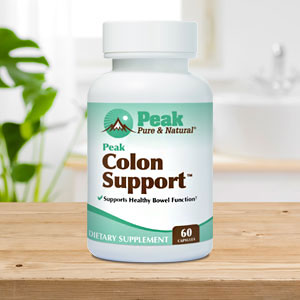Get Easy Health Digest™ in your inbox and don’t miss a thing when you subscribe today. Plus, get the free bonus report, Mother Nature’s Tips, Tricks and Remedies for Cholesterol, Blood Pressure & Blood Sugar as my way of saying welcome to the community!
How well do you know your poo?

Most Americans don’t know that chronic diseases begin from what we put into our body — most of which goes into the digestive tract — and how well it is processed to exit the body. “We are what we eat,” may sound elementary, yet this simple truth deserves immediate attention if we plan to live a long, healthy life.
Since we as a nation have looked far beyond the simple truths of nutrition for our answers to health questions, I know it is time that we get back to these critical, but simple, laws of health, and learn why a healthy bowel is critical to nearly all other aspects of real health.
If food is properly digested and absorbed into the bloodstream, it then must be utilized by a tissue cell somewhere for it to be of any value in the body. We call this assimilation.
But if food is not properly digested, nutrients are not absorbed, toxic waste builds — and your body becomes ripe for disease.
The highly processed and refined foods common in today’s diets lack active enzymes, amino acids, vitamins, minerals, healthy oils and fiber to properly nourish and exercise the colon for health. When these foods pass through the system too slowly and sit for days at a time, toxins in the waste are reabsorbed back into the body — and the disease process begins…
Signs your colon is setting you up for disease
Common symptoms of poor digestive health are constipation, diarrhea, cramps or bloating. Less obvious problems that may develop from an inefficient colon include lack of energy, respiratory and allergy problems, bad breath, acne and skin dryness. And finally, this condition can ultimately lead to non-cancerous polyps, ulcerative colitis or even worse, colon cancer — which is striking more Americans at increasingly younger ages.
But many Americans don’t know how to assess their colon health because they don’t understand how well their digestive system should be working in the first place. You can find out by asking yourself these three questions…
Are you constipated?
Having bowel movements less than twice a day is considered constipation. Ideally, you should have a bowel movement for every meal. That may sound like a lot to you but it’s not. It should happen like clockwork as well because your body doesn’t need to hold a toxic load for hours…
Stool has a very high bacteria count, carries the metabolic wastes that are fat-soluble and contains the chemicals that have been dumped there by the liver for elimination. These toxic wastes must be eliminated or they get reabsorbed back through the colon into the bloodstream again, which is called enterohepatic recirculation.
Therefore, when feces stagnate in the large intestine the proteins that are present will putrefy, the carbohydrates ferment and the fats and oils go rancid. This gives rise to unhealthy bacteria that grow and form more toxins.
Diarrhea can occur during constipation, which many are surprised to learn. So if you experience diarrhea, it’s not safe to assume you are not constipated.
Do you have bloating, gas or excessive fullness after meals?
As the “garbage” builds without it being emptied, gases and other unhealthy organisms build, too. The quantities and types of intestinal bacteria, yeast and stool pH can dramatically alter intestinal and colon health, which directly influences nutrient absorption.
Gas is also a sign that certain foods cannot be broken down well and therefore become substrate for gas-producing bacteria. This is a sure sign of inadequate digestive enzyme function or inadequate stomach acid for the types of foods present.
Is your stool healthy?
I know it’s not pleasant, but the next time you have a bowel movement, take a look at what you’ve produced. The way your stool looks, including color, texture and how it treads water says a lot about your colon health.
Normal stool is medium to light brown in color, smooth, soft and s-shaped. It should be about 1 to 2 inches in diameter and up to 18 inches long. It should fall quietly and gently into the toilet basin and sink slowly.
Unhealthy stool is difficult to pass and may even cause discomfort. It may come out as hard lumps or pieces, mushy bits or narrow strips.
Pay special attention to the color of your stool. Determine which of these categories it falls into — each of which warrants a health assessment:
Black and tarry or bright red: Certain medications, supplements and even black licorice can turn your stools black. But it can also be a sign of bleeding in your GI tract.
White, pale or gray stools: Stools that match these colors may be indicative of a lack of bile, which can be the result of a serious problem, like hepatitis, pancreatic disorders or a blocked bile duct. Antacid can also make your stools white.
Yellow stools: This color may indicate that you’re suffering from giardia infection, a gallbladder problem or a condition known as Gilbert’s syndrome.
If you pass the stool color test but don’t feel the texture and size are quite right, you may be mildly constipated.
Rebuilding your colon health
A colon cleanse should be your starting point for rebuilding a healthy colon. Some people literally carry pounds of waste around in their colon. Imagine how many people are trying desperately to lose weight dieting when in fact, what they truly need is a good old-fashioned colon cleanse. The health benefits would be felt almost immediately.
An intestinal flush is the most effective way to clean out the colon. You can purchase Fleets Oral Saline Laxative over the counter. Alternatively, you can use Epsom salt and follow the directions on the container.
Once you have performed a flush, natural herbals can help keep everything running smoothly afterward, such as Cascara Sagrada, black walnut, slippery elm bark, burdock root, senna, flaxseed and psyllium husks — any of which are very effective at stimulating the bowels but can be especially effective when used in combination like here. Psyllium absorbs water, swells and causes stool to be slippery so they can pass easier. If you are wary of an intestinal flush, these natural colon stimulants can also be used to reverse constipation.
Next make dietary changes to include whole grains, raw fruits and vegetables. The fiber from these foods creates mass that passes through the system more quickly and easily. More importantly, healthful natural foods continue to nourish the very cells of the colon.
Once you understand what the colon needs to be healthy, then the use of natural whole foods and therapies becomes easy — and so does health.
Editor’s note: Did you know that when you take your body from acid to alkaline you can boost your energy, lose weight, soothe digestion, avoid illness and achieve wellness? Click here to discover The Alkaline Secret to Ultimate Vitality and revive your life today!













